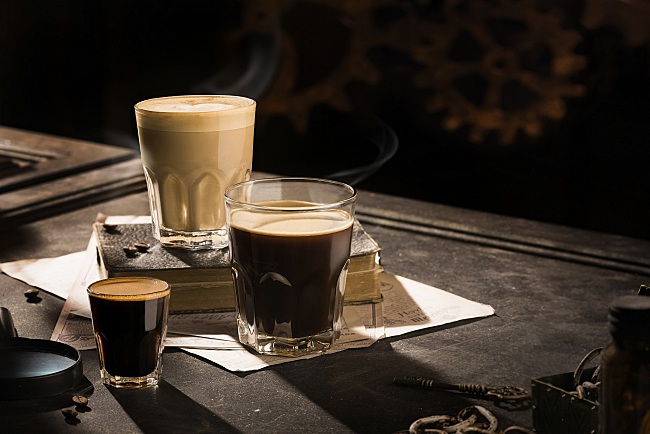A First-Time User’s Guide to Understanding SOE Single Origin Espresso
A First-Time User’s Guide to Understanding SOE Single Origin Espresso
Blog Article
Discovering the Rich Tastes of Coffee Beans: a Deep Study Espresso and Blended Coffee Beans
When you check out the rich tastes of coffee beans, you reveal a complex world where each range brings its very own character to your cup. Comprehending the beginnings, refining methods, and toasting strategies can change your coffee experience. As you navigate through the art of coffee and the imagination behind mixed coffees, you'll begin to value the subtleties that make each sip unique. What you'll uncover next might transform the method you enjoy your morning mixture.
The Beginnings of Coffee Beans: Checking Out Terroir and Flavor Profiles
When you take a sip of coffee, you're not simply appreciating a beverage; you're experiencing a rich tapestry of flavors shaped by the beans' origins. Each area generates distinct flavor profiles affected by climate, soil, and altitude. As an example, beans from Ethiopia frequently burst with brilliant, fruity notes, while those from Colombia often tend to supply a well balanced, nutty sweet taste.
As you explore various origins, you'll discover how terroir-- the environmental aspects affecting a crop-- plays a crucial function - Single Origin Espresso. The exact same coffee variety can taste dramatically various depending on where it's expanded
When you think about these variables, you start to appreciate the complexity behind your mug. Each sip narrates of the land and the farmers who nurtured the beans. Next time you indulge, assume concerning the trip your coffee took before it reached your hands, and enjoy those intricate flavors that show its origin.
Comprehending Coffee: The Art and Science Behind the Brew
When you believe concerning espresso, it's not nearly the solid taste; it's likewise about the techniques that bring it to life. Understanding how various prep work techniques effect taste can transform your brewing experience. Allow's discover the complexities of espresso preparation and uncover the distinct flavor profiles that make each cup special.
Coffee Prep Work Strategies
Coffee preparation is both an art and a scientific research, incorporating precise techniques with a deep understanding of coffee. To start, you'll intend to pick top notch, fresh baked beans and grind them carefully for suitable extraction (Single Origin Espresso). The grind dimension is important; too coarse, and your coffee will be weak, too great, and it'll be bitter
The outcome must be a rich, velvety espresso with a gorgeous layer of crema on top. With technique, you'll grasp these methods.
Taste Profiles Clarified
The globe of espresso supplies an abundant tapestry of flavor profiles that can elevate your coffee experience. You'll notice a balance of sweet taste, acidity, and resentment when you take that initial sip. Each espresso bean carries special notes, from fruity and flower to nutty and chocolaty. Light roasts typically display intense level of acidity and vibrant flavors, while dark roasts present much deeper, bolder tones.
A well-crafted mix might harmonize the bright notes of an Ethiopian bean with the rich, chocolatey undertones of a Brazilian bean. Accept the journey of finding coffee's diverse flavors, and you'll transform your coffee routine into an exciting experience.
Processing Methods: How They Impact Flavor and Aroma
While it could appear that the origin of coffee beans is the most substantial aspect in identifying their flavor and aroma, the handling techniques utilized post-harvest play an equally vital function. You'll find that these approaches can considerably alter the last preference profile of your mug.
As an example, the washed process eliminates the fruit from the beans before fermentation, often leading to a cleaner, brighter flavor. At the same time, the all-natural process leaves the fruit intact during drying out, leading to a sweeter, fruitier profile.
Various other methods, like honey handling, strike a balance, enabling some fruit mucilage to continue to be, offering a distinct intricacy.
Each handling method connects with the beans' intrinsic characteristics, boosting or muting details flavors and scents. When you sip that coffee or mixed coffee, remember that the trip from cherry to cup is influenced not just by origin yet likewise by just how those beans were processed.
Toasting Strategies: Unlocking the Full Potential of Coffee Beans
Roasting strategies are necessary for revealing the full possibility of coffee beans, as they transform raw, eco-friendly beans into the aromatic, savory coffee you delight in. The option of toasting approach-- light, medium, or dark-- dramatically influences flavor profiles. Light roasts protect the beans' all-natural level of acidity and fruity notes, while tool roasts equilibrium sweet taste and splendor. Dark roasts, on the various other hand, stress bold, smoky flavors.
A slower roast at reduced temperature levels enables for intricate flavors to create, while a quicker roast can magnify bitterness. By understanding these methods, you'll reveal a globe of flavor, raising your coffee experience to brand-new heights.
The Magic of Blended Coffee: Creating One-of-a-kind Flavor Experiences
Developing a special flavor experience with combined coffee can transform your morning routine into an exploration of preference. By incorporating different beans from various areas, you can reveal a symphony of tastes that boost your cup to brand-new elevations. Each mix deals an unique profile, balancing level of acidity, sweet taste, and body to produce something genuinely unique.
When you choose a mix, you're not simply choosing a coffee; you're selecting a trip across diverse landscapes and cultures. Trying out with various combinations permits you to find your personal faves, whether you appreciate fruity notes or rich, chocolatey touches.

Sampling Notes: Identifying the Nuances in Your Cup
As you sip your coffee, you could discover a range of tastes dancing on your palate, each exposing the details of the beans. You might taste the bright acidity similar to citrus or the deep, abundant notes comparable to dark chocolate. The sweetness might stimulate honey or sugar, stabilizing the overall profile magnificently.
Take note of the body of the coffee-- does it feel light and airy, or is it complete and creamy? The finish, also, supplies clues; a lingering aftertaste may mean nuttiness or floral undertones.

Do not neglect to discover the unique characteristics of different origins, as each region presents distinct tastes - Single Origin Espresso. Ethiopian coffees usually present fruity notes, while Colombian beans could showcase a more spherical sweetness. By acknowledging these nuances, you'll deepen your admiration for each and every cup, elevating your coffee experience to brand-new heights

Developing Techniques: Optimizing Flavor Extraction for each Bean
When useful site you explore the numerous brewing methods, you'll uncover that each method can considerably influence the taste profile of your coffee. From French press to pour-over, each approach extracts various substances, improving or muting certain notes. Making use of a French press allows oils to stay in the brew, producing a richer preference, while pour-over highlights clarity and brightness.
Temperature level and grind dimension additionally play necessary roles. A coarser work works best for cool brews, while a great grind is perfect for coffee. Experimenting with water temperature level-- between 195 ° F and 205 ° F-- can expose hidden flavors, also.
Don't forget soaking time; a fast extraction can cause sour notes, while over-extraction might produce anger. By adjusting these variables, you can maximize taste removal and really boost your coffee experience. Delight in the trip of finding what approach finest matches your palate!
Regularly Asked Concerns
What Is the Perfect Water Temperature for Developing Coffee?
The optimal water temperature level for brewing coffee's in between 195 ° F and 205 ° F. If you make use of water that's too link warm, you'll over-extract tastes; too chilly, and you will not remove enough. Go for that sweet place for the finest mixture!
How Does Grind Dimension Influence Coffee Flavor?
Work dimension considerably impacts coffee flavor. Finer grinds essence extra oils and flavors, leading to a bolder preference, while coarser grinds yield a lighter taste. Adjusting grind size aids you attain your desired coffee profile.
Are There Wellness Benefits Related To Alcohol Consumption Coffee?

What Is the Distinction Between Arabica and Robusta Beans?
Arabica beans are smoother and sweeter, commonly featuring fruity flavors, while robusta beans are more powerful with a bitter preference and higher caffeine content. You'll see these distinctions in scent and brewing experience.
Just How Can I Shop Coffee Beans for Quality?
To keep coffee beans for freshness, keep them in an airtight container, far from warm, wetness, and light. If you only grind what you require right before brewing., you'll keep their taste much longer.
Checking Out the Rich Flavors of Coffee Beans: a Deep Dive Into Espresso and Blended Coffee Beans.
When you explore the rich flavors of coffee beans, you discover an intricate globe where each range brings its own personality to your mug.When you take a sip of coffee, you're not simply enjoying a drink; you're experiencing a rich tapestry of flavors shaped imp source by the beans' origins.Roasting methods are essential for revealing the full potential of coffee beans, as they transform raw, eco-friendly beans right into the fragrant, delicious coffee you take pleasure in.As you drink your coffee, you could observe a spectrum of flavors dancing on your taste buds, each revealing the details of the beans.
Report this page